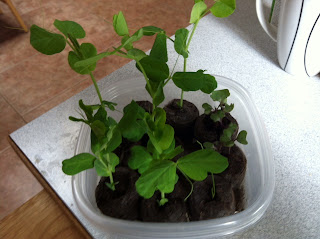A couple of weeks ago, I was fortunate to spend four days in
Manhattan. It was my second time there,
so I had some ideas of things I wanted to do and see. I was traveling with work colleagues, and we
always have the goal of doing as much as possible without causing undue pain or
bodily harm, considering the fact that we are mature adults who recognize the
body’s need for sleep and moderation in the consumption of both caffeine and
alcohol.
 |
| Walking above the city streets |
We generally walk everywhere, and I think that’s the best
way to experience a city. In addition to
the sights, you get the sounds, smells, and even, in New York, the tactile
sensation of the crowds bumping and pressing against you. Walking in Times Square becomes a ballet of
twists and turns, dodging and ducking to avoid collisions. We spent half a day at the Museum of Modern
Art, ate breakfast at the Russian Tea Room, attended two Broadway plays, and
toured Teddy Roosevelt’s birthplace. On
the last full day there, we climbed 30 feet in the air and walked on the High
Line. That was the one thing left on my list of places to see on this trip.
The High Line is a public park located on an elevated
railroad line that was built between 1929 and 1934 on the West Side of
Manhattan between 10th and 11th Avenues, now running from
West 34th Street to Gansevoort Street in the Meat Packing District. The tracks were elevated to reduce the
train-traffic accidents that had given 10th Ave. the nickname,
“Death Avenue”. The High Line was last
used as by trains in 1980 and then stood abandoned for almost twenty years.
Property owners in the area lobbied to have the tracks torn down, but in 1999,
community residents organized to have the area converted into a park. Friends
of the Highline is now a non-profit conservancy which maintains and
operates the park. If you go to their website at www.thehighline.org you can see many more
(and better) photos of the park.
On a sunny November morning, we walked about one mile
surrounded by over 300 varieties of flowers, trees, shrubs, and grasses. The views of the city buildings, parks, and
local landmarks were spectacular. In the
heart of one of the world’s busiest cities, the Highline is an oasis of beauty
and peace.
 |
| View of a tiny Statue of Liberty in the distance |
It’s
remarkable when someone has the vision to see the potential for beauty
something that many would consider a derelict eyesore. Urban parks and green
spaces offer both physical and psychological benefits to city dwellers. Frances
Kuo of the University of Illinois conducted a study of 28 identical high-rise
public housing projects. She found that people living near green spaces had a
stronger sense of community, coped better with everyday stress and hardship, were
less aggressive and less violent, performed better on tests of concentration,
and managed problems more effectively.
The Highline is a wonderful example of reusing a space in a
way that sustains all of us.
























